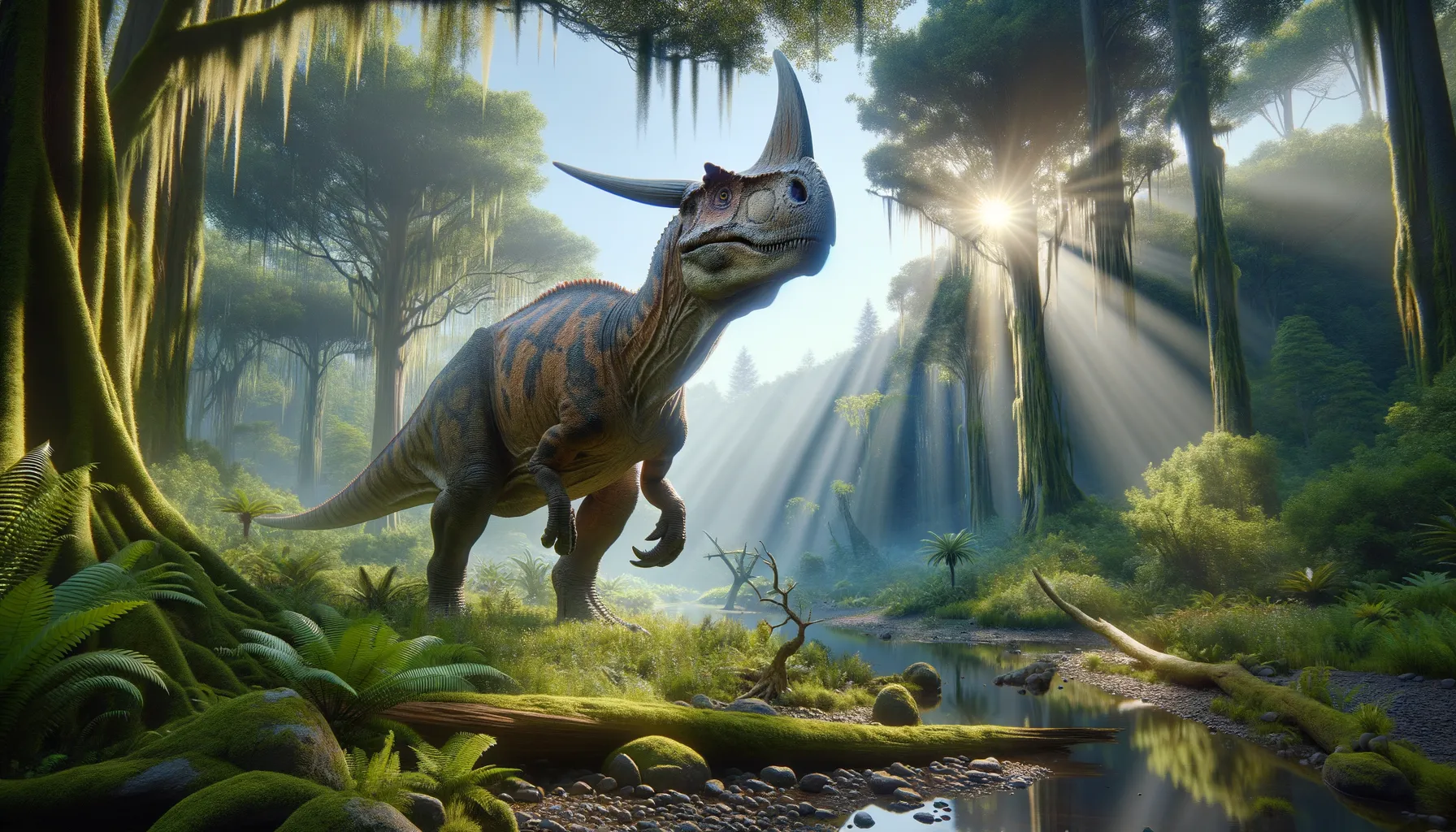
Barilium
Thumb spikes and a gentle giant!
Period
Cretaceous
Length
Estimated to be 25 to 30 feet long.
Height
Approximately 8 to 10 feet tall.
Weight
Around 1.5 to 2 tons.
Barilium was a large herbivorous dinosaur that roamed the Earth during the Early Cretaceous period. As an Iguanodontian, it boasted a stout body and specialized thumb spikes. This peaceful creature likely spent its days in search of food in lush forests, where it feasted on a variety of vegetation. Its fossils provide scientists with interesting insights into the diversity and adaptation of herbivorous dinosaurs of its time.
Diet
Barilium was herbivorous, feeding primarily on plants. It likely consumed a variety of leaves and possibly some fruits, using its beak-like mouth to grasp and strip vegetation.
Hunting
As a herbivore, Barilium did not engage in hunting. It grazed on low-lying plants and shrubs, possibly using its strong jaws to process tough vegetation.
Environmental challenges
Barilium faced challenges such as predation from larger carnivores, requiring it to stay in groups for safety. Climate and environmental changes would also impact its habitat, necessitating adaptations or migration. Despite these challenges, its plant-based diet may have been relatively stable in rich forest environments.
Speed
Barilium likely moved slowly due to its large size.
Lifespan
Estimated life span was around 30 years.
First discovery
Discovered in early 20th century in England.
Fun Facts
- Barilium was a plant-eating dinosaur that lived during the Early Cretaceous period, around 140 million years ago.
- The name 'Barilium' means 'heavy limb', reflecting its strong and sturdy legs.
- Barilium belonged to a group of dinosaurs known as iguanodontians, which were early relatives of the well-known Iguanodon.
- Fossils of Barilium were first discovered in the United Kingdom, shedding light on the diversity of dinosaurs in that region.
- Barilium was a relatively large dinosaur, estimated to have been about 8 meters (26 feet) long.
- Despite its size, Barilium was likely a gentle herbivore, grazing on the lush vegetation of its time.
- Like many plant-eating dinosaurs, Barilium had thumb spikes, which might have been used for defense against predators.
Growth and Development
Barilium likely experienced steady growth, developing strong limbs and a robust body to support its weight. Juveniles may have relied on group protection until reaching maturity. As it aged, its bones and physical features developed to support its large size.
Habitat
Barilium inhabited forested regions with abundant plant life. These areas provided essential resources like food and shelter from predators. The environment was likely temperate with a reliable water source nearby for sustenance.
Interaction with other species
Barilium coexisted with various herbivorous and carnivorous dinosaurs. It may have grazed alongside similar species, sharing resources. With predators around, herd behaviour could have been essential to its survival strategy.
Natural lifespan
In a stable environment, Barilium could live up to 30 years.
Reproduction
Barilium potentially laid eggs, typical of many dinosaur species. Mating rituals might have included displays of dominance or elaborate calls. Nest sites were probably chosen for safety from predators and environmental challenges.
Social behaviour
Barilium might have exhibited gregarious behaviour, living and moving in herds for protection. Social interactions could involve communication through vocalizations or physical gestures with others in the group.
Fossil locations
Fossils of Barilium have been found primarily in the United Kingdom, offering a glimpse into its existence during the Early Cretaceous. These findings help paleontologists understand its place in ancient ecosystems and its environment.
